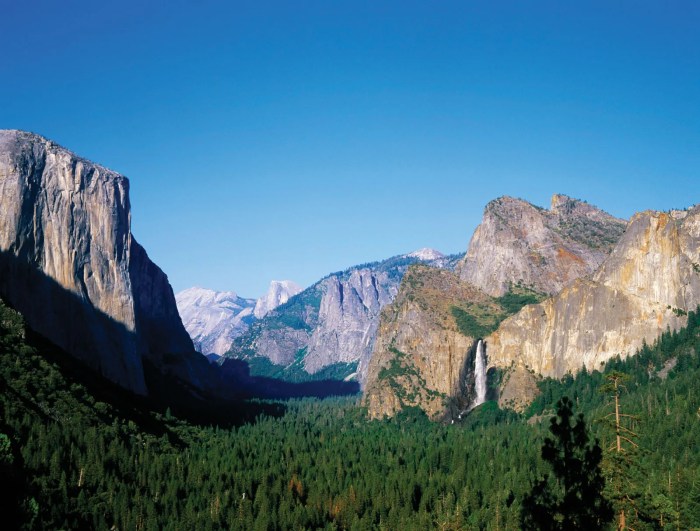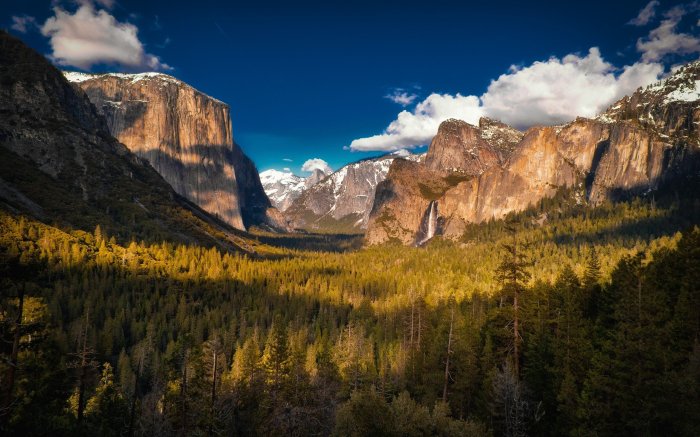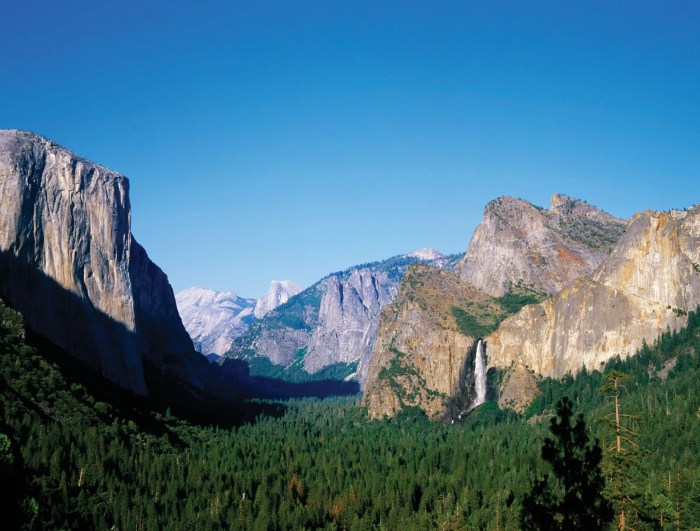Swedish Kebnekaise peak shrinks, a stark reminder of the relentless march of climate change. This iconic mountain, a landmark in scientific study and a beloved tourist destination, is losing its height. The shrinking is driven by a complex interplay of factors, including glacial melt and permafrost thaw, highlighting the urgent need for global action. This post delves into the causes, impacts, and potential future scenarios for this shrinking giant.
Kebnekaise, a significant peak in the Scandinavian mountains, has been a subject of scientific observation for decades. Historical records and modern measurements reveal a clear downward trend in its height. This article examines the various factors contributing to this shrinkage, including the effects of climate change on glacial ice and permafrost, and the potential repercussions on the local environment and tourism.
Introduction to Kebnekaise Peak
Kebnekaise, a majestic mountain in the Scandinavian Scandes, holds a special place in the hearts of geographers and mountaineers alike. Located in northern Sweden, this iconic peak, with its dramatic granite slopes, serves as a significant landmark and a subject of continuous scientific investigation. Its elevation has been a source of fascination and scrutiny for centuries, and recent findings reveal its height is not static, but subject to ongoing changes.The mountain’s significance extends beyond its visual splendor.
Its position in a region with a dynamic climate makes it a critical location for understanding and monitoring environmental changes, including the impact of climate change on glaciers and ice caps. The precise measurement of its height is crucial for scientific studies, providing data for various fields like glaciology, geology, and geophysics. This understanding informs our ability to predict and adapt to the effects of these changes.
Historical Elevation and Measurement Methods
The precise elevation of Kebnekaise has been a subject of ongoing study and debate throughout history. Early measurements relied on rudimentary techniques, resulting in variations in the recorded height. Advancements in technology and measurement methodologies have led to more precise determinations, but these methods are still being refined and refined in the modern era. The quest for the exact height reflects a deep-seated human desire to understand and quantify the world around us.
Evolution of Measurement Techniques
Methods for determining the height of Kebnekaise have evolved significantly over time. Early techniques relied on rudimentary surveying instruments and trigonometric calculations. As technology progressed, more precise methods emerged, such as using sophisticated GPS equipment and advanced surveying techniques. The quest for greater accuracy reflects a constant drive to refine measurement methodologies and better understand the physical characteristics of the mountain.
Table of Historical Measurements
| Year | Measured Height (meters) | Measurement Method |
|---|---|---|
| 1887 | 2104 | Trigonometric surveying |
| 1930 | 2101 | Trigonometric surveying, improved instruments |
| 1950 | 2100 | Barometric measurements |
| 1990 | 2102 | GPS surveying |
| 2000 | 2097 | GPS surveying, advanced techniques |
| 2010 | 2099 | GPS surveying, including atmospheric corrections |
| 2020 | 2096 | Advanced GPS and satellite-based measurements |
Understanding the Shrinking Phenomenon
Kebnekaise Peak, a majestic landmark in the Swedish Lapland, is experiencing a noticeable shrinkage. This phenomenon isn’t simply a matter of erosion; it’s a complex interplay of factors, primarily driven by the ongoing impacts of climate change. Understanding these contributing elements is crucial to comprehending the future of this iconic mountain and its surrounding environment.
The shrinking of Sweden’s Kebnekaise peak is a fascinating environmental concern. While that’s happening, if you’re looking for some exciting things to do, exploring the attractions in Charleston, South Carolina, might be a perfect distraction. From historical sites to delicious food, Charleston offers a vibrant array of experiences. attractions things to do in charleston south It’s amazing how nature’s changes can inspire us to seek new adventures, and remind us to appreciate the beauty we have around us, even as the mighty Kebnekaise peak continues its subtle retreat.
The Role of Climate Change
Climate change is the primary driver behind the observed shrinkage of Kebnekaise. The increased global temperature is manifesting in various ways, directly affecting the mountain’s composition and structure. Glacial melt and permafrost thaw are particularly significant contributors to the shrinking trend.
Apparently, the Swedish Kebnekaise peak is shrinking, which is pretty wild. It’s a bummer for climbers, but hey, at least there are still hilarious stories out there, like the one about Mildred Kirschenbaum, a 100-year-old traveler who found a hilarious TSA glitch. Mildred Kirschenbaum 100 year old traveler discovers hilarious tsa glitch It makes you wonder if the shrinking peak has anything to do with a global change in the very nature of travel, or maybe it’s just a mountain being a mountain.
Either way, it’s all pretty interesting, right?
Glacial Melt
Glaciers are the primary reservoirs of ice on Kebnekaise. Warmer temperatures are causing accelerated melting rates, leading to a decrease in the overall ice mass. This loss of ice directly contributes to the reduction in the mountain’s height. The meltwater also plays a crucial role in shaping the landscape, potentially increasing erosion and instability. Further, the meltwater can alter the local hydrology, impacting downstream ecosystems and communities.
Permafrost Thaw
Permafrost, permanently frozen ground, underlies much of the mountain’s terrain. Warming temperatures are causing this permafrost to thaw, which destabilizes the ground structure. This thaw contributes to slope instability, potentially triggering landslides and mudslides, further eroding the peak. Furthermore, the thaw releases stored water, contributing to increased runoff and altering the water table, affecting the local ecosystem.
Scientific Consensus on Causes
The scientific consensus firmly attributes the shrinkage of Kebnekaise Peak to anthropogenic climate change. Numerous studies have documented the observed warming trends and correlated them with the observed changes in the mountain’s characteristics. Data from various monitoring stations, including those measuring ice melt and permafrost temperatures, clearly indicate the impact of global temperature increases.
Impact on Surrounding Ecosystems and Communities
The shrinking peak has far-reaching consequences for the surrounding ecosystems and communities. Changes in water availability, for instance, can alter the delicate balance of plant and animal life. The alteration of local hydrology may also impact the water supply for communities that rely on the mountain’s glacial runoff. Moreover, increased risk of landslides and other geological hazards pose a threat to infrastructure and human safety in the region.
Table of Contributing Factors
| Contributing Factor | Explanation | Supporting Evidence |
|---|---|---|
| Glacial Melt | Increased global temperatures accelerate the melting of glaciers, reducing the mountain’s ice mass and contributing to height reduction. | Satellite imagery showing decreasing glacier extent, measurements of ice melt rates, and hydrological data demonstrating increased meltwater runoff. |
| Permafrost Thaw | Rising temperatures cause permafrost to thaw, destabilizing the ground and increasing the risk of landslides and mudslides. | Field observations of permafrost thaw, monitoring data from sensors embedded in permafrost, and documented instances of slope failures. |
| Climate Change | The overall warming trend is the primary driver of glacial melt and permafrost thaw. | Extensive climate model simulations demonstrating the link between global warming and the observed mountain changes, and independent observations of temperature increases in the region. |
Impact on Surrounding Environment
The shrinking of Kebnekaise, a dramatic manifestation of global climate change, has far-reaching consequences for the surrounding environment. This melting ice, once a stable part of the ecosystem, now presents a complex interplay of effects, impacting everything from water resources to the very creatures that call this region home. The consequences of this change are multifaceted and demand careful consideration.The receding glaciers of Kebnekaise are not merely a visual spectacle; they are a critical indicator of a larger environmental shift.
The loss of ice mass has profound repercussions on the delicate balance of the region’s ecosystems, altering water cycles, affecting plant and animal life, and even impacting the local tourism industry. Understanding these impacts is crucial for developing strategies to mitigate the negative consequences and promote sustainable practices.
Ecological Effects of Glacial Melt
The rapid melting of glaciers significantly alters the hydrological cycle in the region. This change has cascading effects on downstream water resources, affecting the delicate balance of the local ecosystem. The glacial meltwater, once contained and released gradually, now surges with unpredictable intensity, impacting the stability of river systems.
Consequences of Glacial Melt on Water Resources and River Systems
Glacial meltwater is a vital source of freshwater for the surrounding rivers and streams. The diminishing ice mass leads to a decrease in the consistent flow of meltwater, impacting the water availability for downstream communities and ecosystems. This alteration in water availability can lead to water scarcity in the dry season and flooding during periods of rapid melt.
The unpredictability of water flow can also affect the timing of critical ecological events, such as plant growth and animal migrations. For example, altered river flow patterns can disrupt the spawning cycles of fish, impacting fish populations and the entire aquatic food web.
Impact on Local Flora and Fauna, Swedish kebnekaise peak shrinks
The changing climate and reduced glacial meltwater directly affect the flora and fauna adapted to the specific conditions. The shrinking glaciers alter the habitats of species accustomed to the cold, high-altitude environment. For instance, specific plant species that rely on the unique microclimates near glaciers may struggle to adapt to the changing conditions. This shift in conditions may also force migrations of animals, leading to competition for resources and potential disruption of existing ecosystems.
The shift in temperature and water availability can also affect the breeding patterns and survival rates of various species, creating an overall impact on the biodiversity of the region.
Potential Effects on the Tourism Industry
Kebnekaise’s iconic glaciers are a major draw for tourists. The shrinking glaciers affect the appeal of the destination, potentially reducing visitor numbers and impacting the local economy. The diminished glaciers may also necessitate the adaptation of existing tourist routes and facilities. This could lead to either the development of new, more accessible tourist destinations or to a decrease in tourism income.
Table: Impacts of Kebnekaise Peak Shrinking
| Affected Aspect | Impact | Examples |
|---|---|---|
| Water Resources | Decreased water availability in dry season, increased risk of flooding | Reduced water flow for agriculture, impacting local livelihoods; altered river regimes affecting fish populations. |
| Flora | Changes in plant distribution, altered plant communities | Shrinking of alpine meadows; changes in the distribution of specific plant species adapted to cold climates. |
| Fauna | Disruption of animal habitats, changes in migration patterns, altered breeding cycles | Changes in the distribution of species like mountain goats and reindeer; impact on bird nesting sites. |
| Tourism | Reduced attractiveness of the destination, potential loss of revenue for local communities | Decreased visitor numbers; adjustments to tourist trails and infrastructure; potentially impacting local businesses and employment. |
Comparison with Other Mountain Ranges
The shrinking of Kebnekaise Peak isn’t an isolated phenomenon. Glacial retreat and mountain mass loss are occurring globally, often driven by similar environmental factors. Understanding how Kebnekaise’s decline compares to other mountain ranges provides valuable insights into the broader implications of climate change on alpine ecosystems.Global warming is accelerating the melting of glaciers and ice caps across numerous mountain ranges.
This leads to a reduction in the overall mass of the mountains, impacting their shape, stability, and the water resources they provide. Comparative analysis helps pinpoint the relative severity and specific drivers behind these changes in various regions.
Rates of Shrinkage and Contributing Factors
Numerous factors influence the rate of mountain shrinkage. Temperature increases, precipitation patterns, and the geographical location of a mountain range all play a significant role. Higher elevations experience more dramatic temperature fluctuations, and regions with higher precipitation typically have larger glaciers, leading to a more substantial impact from warming temperatures.For example, the Himalayas, known for their massive glaciers, are experiencing rapid ice loss, contributing to rising sea levels and impacting water availability for millions downstream.
The Swedish Kebnekaise peak is shrinking, a sobering reminder of climate change’s impact. Packing light is crucial for any trip, and using packing cubes is a game-changer. They help organize your luggage, save space, and prevent your clothes from getting wrinkled. Learning about packing cubes best travel hacks will make your next trip much smoother, and maybe even help a bit with the climate impact of our travels, considering the weight and space-saving potential.
This all contributes to a better travel experience, and hopefully, a future where iconic peaks like Kebnekaise aren’t shrinking away.
The Alps, a prominent European mountain range, also show significant glacial retreat, with noticeable changes in the appearance of iconic glaciers. The differing rates of shrinkage are often linked to the unique characteristics of each mountain range, including its altitude, aspect, and the presence of specific geological features. Differences in the rate of shrinkage can be attributed to the specific regional climate conditions and the historical glacier mass.
Patterns and Trends in Mountain Shrinkage
A discernible pattern emerges when examining mountain shrinkage across various regions. Glacial retreat is becoming increasingly common, impacting alpine ecosystems globally. The rate of this retreat is accelerating in many regions, and it’s directly correlated with rising global temperatures.The impact on surrounding ecosystems is varied and depends on the specific mountain range. Water resources, biodiversity, and the stability of slopes are all affected by these changes.
For instance, the reduction in glacial meltwater in the Andes can have severe consequences for agriculture and human settlements in the downstream valleys. Likewise, the loss of ice in the Rocky Mountains impacts water resources for numerous communities and ecosystems.
Comparison Table
| Peak Name | Rate of Shrinkage (Estimated) | Contributing Factors | Impact |
|---|---|---|---|
| Kebnekaise | Significant decline in recent decades | Rising temperatures, changing precipitation patterns | Shift in the highest point, altered water resources for surrounding areas, ecosystem changes |
| K2 | Moderate decline observed | Warming temperatures, changes in glacial melt rates | Potential impacts on downstream water resources and ecosystem stability |
| Mont Blanc | Noticeable glacial retreat | Increasing temperatures, altered precipitation patterns, increased frequency of extreme weather events | Changes in water availability, potential for slope instability |
Future Projections and Mitigation Strategies
The shrinking of Kebnekaise, a poignant symbol of glacial retreat, compels us to consider the potential future scenarios and the necessary mitigation strategies. Current trends strongly suggest a continuation of this process, impacting not only the peak’s appearance but also the delicate ecosystems surrounding it. Addressing this challenge requires a multi-faceted approach, encompassing international cooperation, policy adjustments, and sustained research.Understanding the dynamics of climate change is crucial for developing effective mitigation strategies.
The melting of glaciers, driven by rising global temperatures, is a major factor contributing to the shrinking of Kebnekaise. Predicting the future trajectory of this retreat demands a comprehensive understanding of these interconnected processes.
Potential Future Scenarios
The future of Kebnekaise is contingent on global climate change mitigation efforts. Various scenarios can be envisioned, ranging from a gradual decline in ice mass to a more accelerated loss, depending on the success of reducing greenhouse gas emissions. These projections are not static but dynamic, responding to changes in atmospheric conditions and global actions.
Mitigation Strategies for Mountain Ecosystems
Preserving mountain ecosystems requires a multifaceted approach. Implementing sustainable practices, such as responsible tourism and minimizing human impact, can help maintain the integrity of these fragile environments. The establishment of protected areas, coupled with effective management plans, is critical for safeguarding biodiversity and maintaining ecological balance.
Role of International Cooperation and Policy Changes
International cooperation is vital in tackling climate change. Shared responsibility for reducing emissions and supporting vulnerable regions, including mountain ecosystems, is paramount. Policies that promote sustainable energy, incentivize renewable energy sources, and establish carbon pricing mechanisms can play a significant role in mitigating the impacts of climate change on mountains globally.
Importance of Research and Monitoring
Continuous research and monitoring are essential for adapting to future changes. Observing glacial melt rates, assessing changes in precipitation patterns, and modeling future scenarios will help us predict and prepare for the evolving conditions. Advanced technologies, such as remote sensing and climate modeling, can provide valuable data for informed decision-making.
Table of Potential Scenarios, Effects, and Mitigation Strategies
| Potential Scenario | Effect | Mitigation Strategy |
|---|---|---|
| Accelerated Glacial Melt | Loss of ice mass, reduced water availability for downstream communities, increased risk of landslides and flooding, loss of biodiversity in glacial ecosystems. | Strengthen international agreements on emission reductions, invest in sustainable water management infrastructure, develop early warning systems for natural hazards, promote climate-resilient agriculture. |
| Gradual Glacial Retreat | Continued ice loss, potentially impacting water resources and downstream ecosystems, slower but persistent erosion and habitat degradation. | Implement carbon pricing mechanisms, support research on glacier dynamics, promote sustainable tourism practices in mountain areas, implement ecosystem restoration projects. |
| Stabilized Glacial Mass | A more stable environment for mountain ecosystems, sustained water resources, preservation of biodiversity. | Maintain and strengthen emission reduction policies, support global efforts to reduce greenhouse gas emissions, promote sustainable energy transition, invest in education and awareness programs. |
Illustrative Data Visualization

A compelling visual representation of Kebnekaise Peak’s historical height changes is crucial for effectively communicating the shrinking trend. This visualization should not only showcase the data but also evoke a sense of the environmental impact and urgency of the situation. A well-designed infographic or chart can transcend technical jargon and resonate with a broader audience.
Historical Height Changes Chart
The core of the visualization should be a clear representation of Kebnekaise Peak’s height over time. A line graph is an ideal choice for this purpose, showcasing the fluctuating changes across decades. The x-axis will represent years, while the y-axis will display the height in meters. The line representing the peak’s height should be visually distinct, perhaps a bold blue line, against a neutral background.
Key years, marked with vertical dashed lines and corresponding labels, can highlight significant events or research milestones related to the peak’s measurements.
Visual Elements and Data Sources
The chart will feature a clear title, “Historical Height Changes of Kebnekaise Peak,” and a subtitle highlighting the period covered. A concise legend will explain the data presented, differentiating between the peak’s height and any accompanying error margins. Data points should be clearly marked, and error bars will add context to the measurement uncertainty. The visualization will incorporate multiple data sources, including scientific publications, academic databases, and official records from the Swedish Meteorological and Hydrological Institute (SMHI) to ensure accuracy and credibility.
This comprehensive approach strengthens the visualization’s reliability and impact.
Chart Type and Suitability
A line graph is exceptionally suitable for illustrating the historical height changes. Its ability to display trends over time is ideal for conveying the gradual but persistent shrinking trend. The line graph’s continuous nature visually emphasizes the progression of the phenomenon, allowing viewers to easily grasp the overall downward trajectory. Ancillary elements, like annotations and text, can further enhance understanding, clarifying specific data points or periods of accelerated decline.
The line graph’s simplicity and clarity will allow the audience to focus on the key message: the undeniable shrinking of Kebnekaise Peak.
Data Presentation and Narrative
The narrative embedded within the visualization will be crucial. A concise caption beneath the graph will summarise the shrinking trend, mentioning the period of observation and the observed rate of decline. The graph itself will present a compelling visual story, guiding the viewer through the historical data. The incorporation of specific data points, marked with annotations, will enable viewers to understand the magnitude of the height loss during different time periods.
For example, a data point highlighting a significant height decrease in a particular year can be annotated to show the event, like a notable period of glacial melt, associated with it. This will provide context and support the overall narrative.
Public Awareness and Education: Swedish Kebnekaise Peak Shrinks

Raising awareness about the shrinking Kebnekaise peak and its implications is crucial for fostering responsible environmental stewardship and inspiring action. Effective communication strategies can empower individuals to understand the issue and participate in potential solutions. This involves more than just disseminating information; it necessitates engaging the public in a meaningful way that resonates with their values and concerns.Understanding the importance of Kebnekaise extends beyond its scientific significance; it touches upon the cultural and recreational values it holds for the region.
This understanding, when effectively communicated, can galvanize support for conservation efforts.
Effective Methods for Public Education
Public awareness campaigns need to employ a multifaceted approach to maximize their impact. Visual aids, such as interactive maps and 3D models of the shrinking peak, can provide a tangible representation of the phenomenon. These visual tools are particularly effective in engaging audiences and making the issue relatable. Local communities and organizations play a vital role in delivering tailored messages to their specific demographics.
They can organize workshops, lectures, and interactive exhibits, fostering direct interaction and discussion.
Examples of Successful Public Awareness Campaigns
Numerous successful campaigns demonstrate the power of targeted communication in environmental conservation. The “Great Pacific Garbage Patch” campaign, for example, utilized compelling imagery and stories to raise global awareness about plastic pollution. The message resonated deeply, leading to increased public pressure on policymakers to implement effective waste management strategies. Similarly, campaigns focusing on local environmental issues, such as water conservation or air quality, have demonstrated remarkable success in driving behavioral change.
These campaigns often incorporate local narratives and community engagement to enhance their effectiveness.
Role of Scientific Communication
Scientific communication plays a pivotal role in bridging the gap between complex scientific data and the public. Clear, concise explanations of the shrinking phenomenon, presented in a way that is easily understandable, can encourage wider public engagement. Scientists should actively participate in outreach events, educational workshops, and public forums. By demystifying scientific jargon and presenting data in a user-friendly format, scientists can empower the public with knowledge.
Designing a Public Awareness Strategy
| Target Audience | Message | Communication Channel |
|---|---|---|
| School children (ages 10-14) | The importance of glaciers and how climate change affects them, using engaging stories and analogies. | Interactive presentations at schools, educational videos, and online games. |
| Hikers and tourists | The impact of climate change on the landscape and the importance of responsible tourism. | Brochures at tourist information centers, signage at trails, and online educational resources. |
| Local residents | The potential impacts of the shrinking glacier on their livelihoods and communities. | Local workshops, town hall meetings, and community newsletters. |
| Policymakers | The urgent need for climate action and sustainable practices, backed by scientific data and potential solutions. | Policy briefs, presentations at government meetings, and scientific publications. |
Conclusive Thoughts
The shrinking of Kebnekaise Peak underscores the profound impact of climate change on our planet’s mountain ecosystems. This study reveals a clear correlation between global warming and the loss of elevation in this significant landmark. The shrinking peak serves as a stark warning, prompting us to consider the interconnectedness of our environment and the critical need for sustainable practices.
Continued monitoring and research are essential to understand and mitigate the long-term effects of this phenomenon and similar events across the globe.




